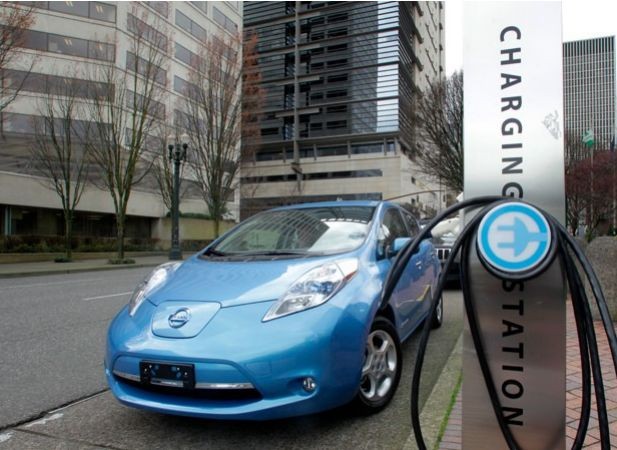NUVVE- Cars as battery for the grid
Linking electric vehicles to the grid is a new way of reducing emissions and at the same time generating revenue for Electric Vehicle (EV) owners. By connecting electric vehicles to a grid operator, excess energy can be sold to the grid, making a profit for the owner and a more sustainable transport.

The challenge
Reducing the usage of fossil fuel from transportation is an increasingly important subject for many car manufacturers as government regulations are becoming tougher. Creating a zero emission vehicle with a low price is still a challenge.
The innovation
A way to make it easier for people to choose a low emission car would be by integrating energy production in the solution, producing an economic and ecologic car solution. This is the innovation behind NUVVE’s developed “Vehicle to Grid” (V2G).
The innovative system was first developed by Professor Kempton at the University of Delaware (USA) with a public grant funding for demonstration. The system consists of three components: an aggregator module, a vehicle smart link (to interface with the car’s charging), and a smart electric vehicle supply equipment (EVSE) for passing signals and managing energy flows in different directions.
The V2G Aggregation solution can effectively provide electric energy to the grid by integrating the vehicle to the grid operator. The excess electricity in the car’s battery can then be sold to the grid, making a profit for the EV owner while the grid operator can receive more renewable energy into the grid.
Trials with V2G technology have demonstrated that it is possible to achieve annual revenues of $200-$500 per vehicle. Over the life of the vehicle the EV owner can earn $10 000 through connecting to the grid. As a positive effect it also reduces emissions.
The full concept of NUVVE’s V2G makes it possible for a parked electric car to have the ability to both charge the car’s battery and discharge it by sending electricity to the grid. The system operator can simply delay the electric car charging and treat it as a generator which generates small amounts of power – if the driver allows it. The process to charge or discharge the battery starts by plugging in the electric car into a charger that charges the battery to 50%. This is to ensure that it is safe to switch to V2G mode. When the vehicle's battery has reached a charge of 50% the system automatically changes the mode to V2G. Then the system can offer power capacity and regulate the grid by sending energy back and forth, generating revenue for the EV owner. When the driver is going for the next trip, you switch back from the V2G mode, recharging the battery.
Why did it work?
The innovation of NUVVE's V2G started with Professor Kempton at the University of Delaware and the Chief Technical Officer (CTO) at NUVVE who wanted to change the problem of large, heavy and expensive lithium-ion batteries used in electric cars.. Professor Kempton wanted to create value for the EV owner and create economic incentives for potential buyers of EV.
The V2G technology has been developed during the past 10 years together with a team at the University of Delaware, consisting of 15 people, which contributed to the development and success of the innovation.
Further deployment
V2G is a proven technology so that it is estimated to be 9 on the TRL scale. Further deployment of the technology (and the next step for the company NUVVE) is to scale up the technology and distribute it commercially around the world.
Links:
The website
